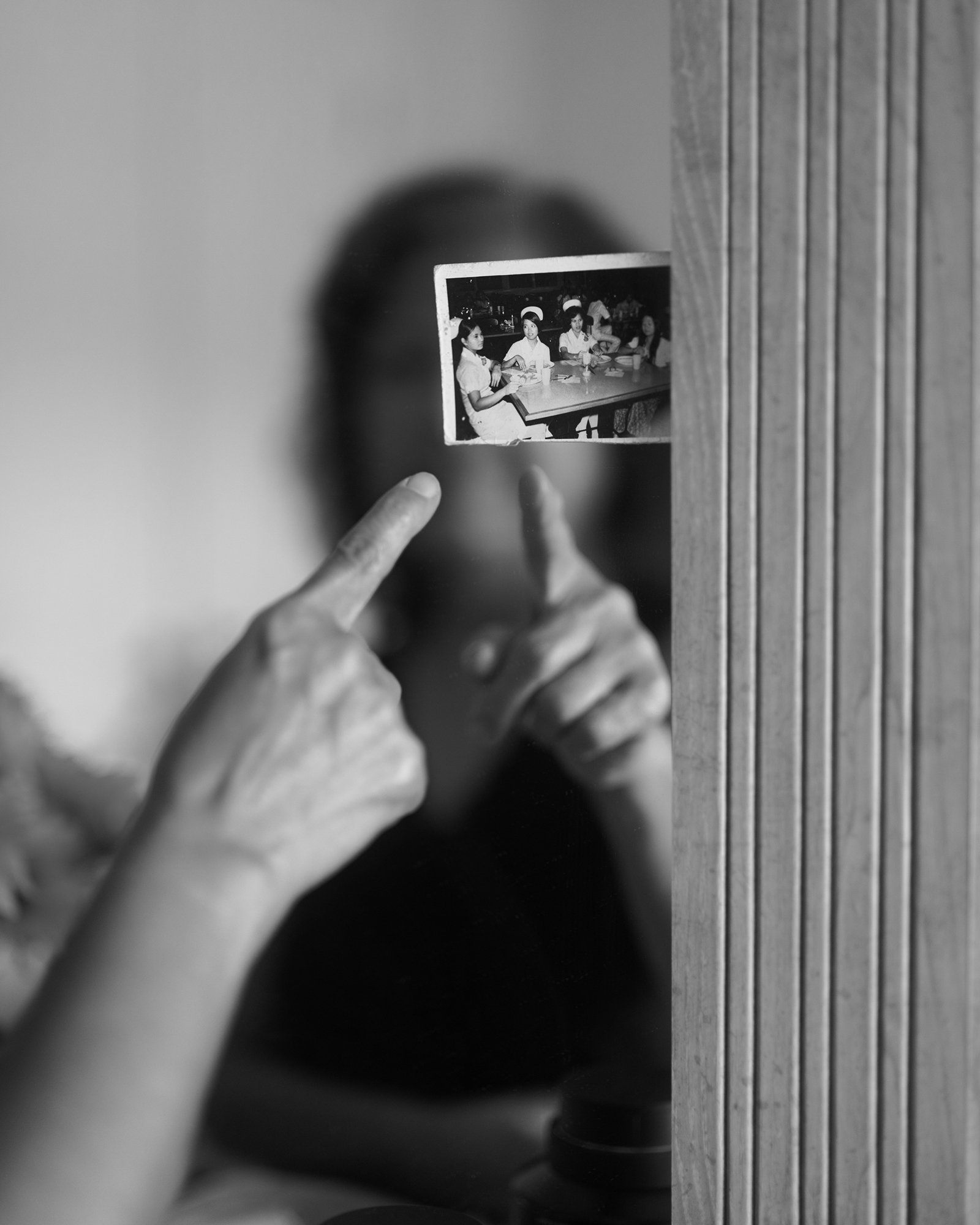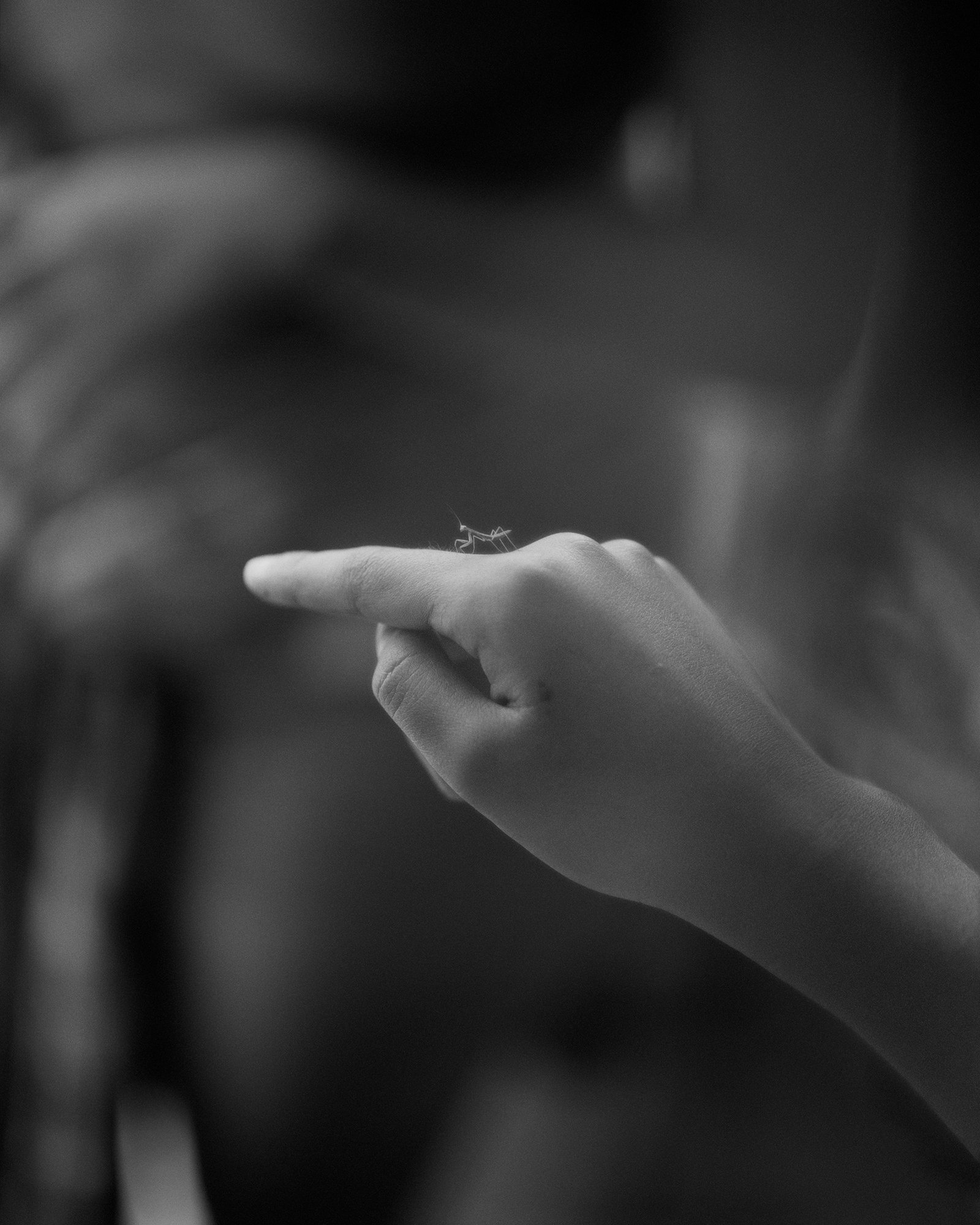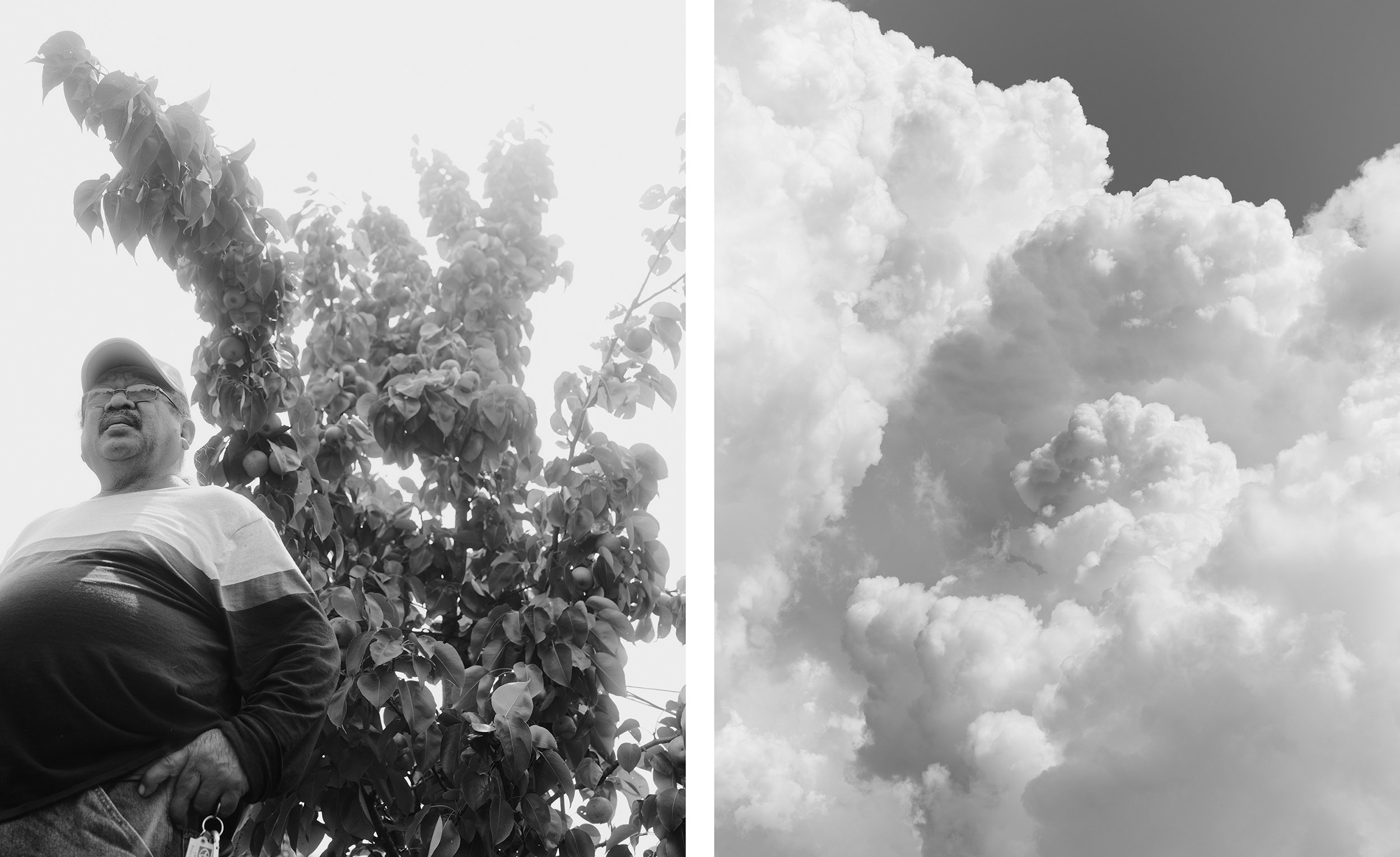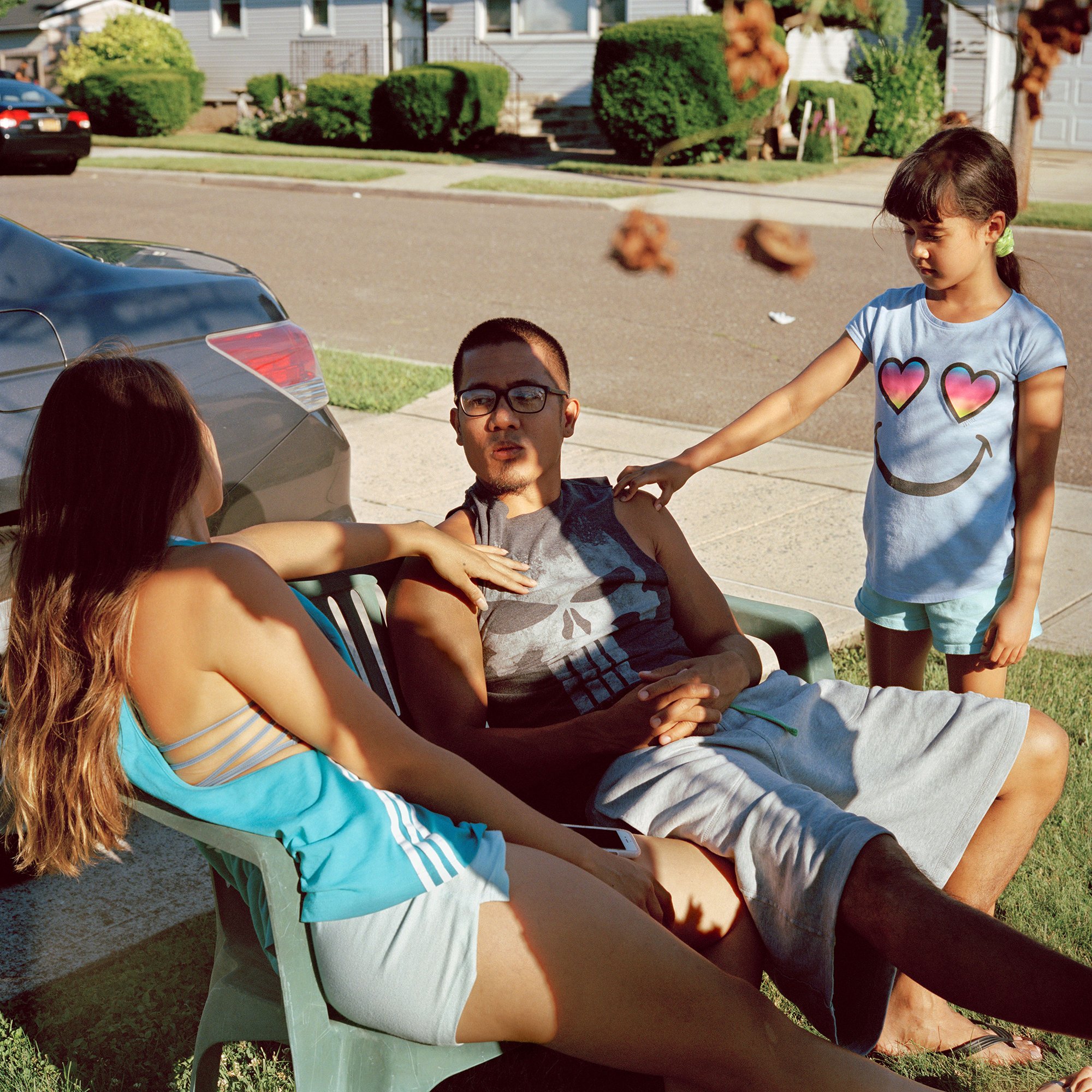Ryan Frigillana
I first came across Ryan Frigillana’s work this past spring when one of his images of the Orchid Show at the New York Botanical Garden was published as the ‘Go opener’ in the New Yorker magazine. It was a dazzling photo of mirrors and orchids that showed me the beauty of nature - of flowers - presented in a new, fresh way, as were the outtakes he shared on his Instagram. Looking up Ryan’s website and Instagram, I was rewarded with more photos showing his rich sensitivity to nature along with intimate and incisive explorations of family, migration, and identity. The connections between family and nature are often explicit in his work and made me consider the idea of family as ecosystem - and what it can mean to move people born or raised in one environment to another. While we can all thrive in a new environment, the initial months and years of displacement can often prove difficult. When we have at last made a flourishing life in a new place, where does that thing inside us go that still misses the soil where roots first grew?
Broken Tractor, 2022. From the series, Manong. © Ryan Frigillana
I asked Ryan to tell me about his path into photography and the visual arts:
I was born in the Philippines and immigrated to the States with my family when I was about three years old. I don't come from an art background. I was groomed to have a career in healthcare from a young age, but I had little interest in the sciences, and I was terrible with math. Because of the language barrier growing up, I had difficulty making friends, so I took to sketching, and making comics, and writing poetry. Pablo Neruda was a monumental figure for me; his writing and way of visualizing the common world played a huge role in how I developed my sensibilities early on. I have always been an expressive person, but I never considered photography an artform until I was much older; the camera only served a utilitarian purpose in my household for memorializing moments and milestones. I took an Intro to Photography elective while I was in nursing school, and that was my first real taste of it outside of that context.
Reflection, 2022. From the series, Manong. © Ryan Frigillana
My interest in the medium blossomed when I bought my first camera (a Nikon FE) and taught myself how to process B&W film at home. At this point, I had dropped out of nursing school and started working a job in horticulture, which I did for several years. In the meantime, I learned to develop my eye by photographing my family, and by devouring photobooks and films (Stanley Kubrick, Terrence Malick, and Wong Kar-wai were huge influences). Oddly enough it was during this day job in horticulture, where I found myself staring at plants all day, that I learned to truly pay attention to my surroundings, to recognize the fragility and wonder in the smallest things—in shapes and curves, and in the movement of light and shadow. That job taught me how to be present with myself, to slow down and appreciate stillness. I began to observe the expressive gestures of plants—in the ways they would droop, or arch upwards in the sun, or how they would dry, wither, and transform. Training myself to find intimacy in the inanimate translated into how I observed and photographed people. Those years were formative for me in developing my visual sensibilities, but I still needed to develop a vocabulary of skills and critical thinking to match. After a long hiatus, I decided to enroll myself back into school to study photography full time.
Starved, 2020. From the series, The Weight of Slumber. © Ryan Frigillana
I joke that I became a photographer because I'm too impatient to draw or paint. There is some truth to that. What I love about photography is its immediacy and ubiquity. Anyone can make a photograph quickly and easily, but to create images with intent and to construct meaning out of an already-hyper-visual world is a challenge that I relish. My excitement for the medium lies in its slipperiness and its serial nature, and the potential that can be born from all that—that's what keeps me coming back to it. Images are everywhere, but you can't really pin them down because our relationships to them change over time and place. They are like little seeds that contain a dormant life. Where that seed is planted, contextually, will determine what meaning I am able to harvest from it later. I have many images collected in my archive that I like, but they don't yet have a "home" so to speak.
Direction Home, 2020. From the series, The Weight of Slumber. © Ryan Frigillana
When it comes to my praxis, I am at the point where I've found the itch that will take me a lifetime to scratch. I'm deeply invested in using photography to process my identity as a Filipino-American and employing this language as a catalyst for dialogue—to build community, connection, and understanding. My mother used to photograph our family as her way to celebrate and remember ourselves; I hope that what I’m doing with a camera today honors that spirit and much more. I am currently working on my next long-term project titled "Manong" that engages with the overlooked history of Filipino migrant workers in the U.S., using my own family to explore themes of generational labor and faith. I aim to publish this work as a book in the distant future.
Father, 2021 / A Heaven We Share (diptych), 2022. From the series, Manong. © Ryan Frigillana
My relationship to photography is one that’s in constant flux, but it is through these changes that I grow and deepen my connection to it. I've gone through many phases of interest in my work, from street, to still life, to documentary and conceptual work, etc. — but it’s all vocabulary building, and all ongoing. In the end, these experiences only serve to strengthen my relationship to my craft and help me better understand my position within it. Your ability to create is one thing no one can ever take away from you, so why not try everything? Throw yourself into your practice—suck at it, exceed, and suck at it some more. Keep working until you find yourself saying what you really want to say, not what others want to hear. But to arrive at that point, you just need to keep making. Half of the time, I don't know what I'm doing; I never have it all figured out. But I allow the act of creating to guide my steps. I can have all the greatest ideas in the world, but I need to try them to see where they lead me next. When I’ve done far more failing than succeeding, then I think maybe I’m on to something worthwhile...hopefully. But regardless of process, I am reminded to always begin from a place of genuine curiosity—a place that is authentic to me.
Knowing Good and Evil, 2018. From the series, Visions of Eden. © Ryan Frigillana
The House They Built, 2022. From the series, Balikbayan. © Ryan Frigillana
Protector, Predator, 2021. From the series, Manong. © Ryan Frigillana
False Idols, 2020. From the series, Visions of Eden. © Ryan Frigillana
Family Tree, Emme’s Painting (White Picket Fence), 2022. From the series, Manong. © Ryan Frigillana
Ryan Frigillana (he/him), b. Iligan City, Philippines, is a New York-based visual artist working with photography and image archives. His work reflects on the construction of familial identity, history, and home as a first-generation American.
He is the author of two monographs: Visions of Eden (self-published, 2020) and The Weight of Slumber (Penumbra Foundation, 2021). Select awards include a MUUS Collection / Penumbra Foundation Risograph Print & Publication Residency, the NYFA / JGS Fellowship for Photography, and being selected for the 2022 NY Times Portfolio Review.
He is open for projects and commissions.









